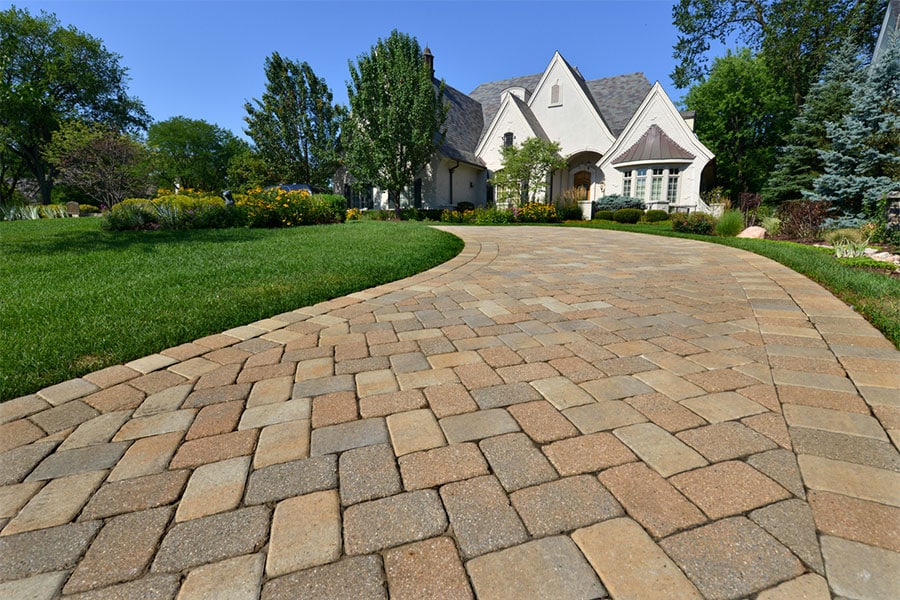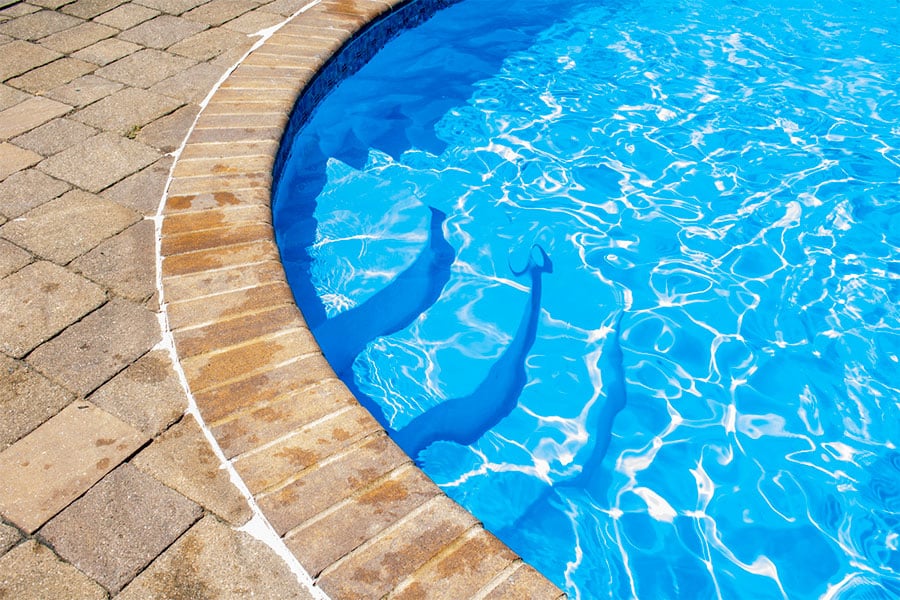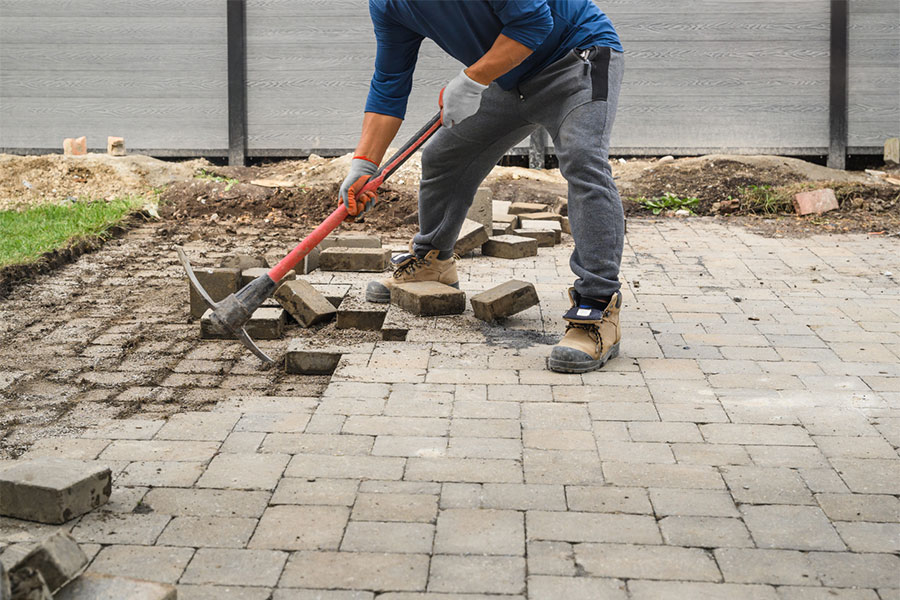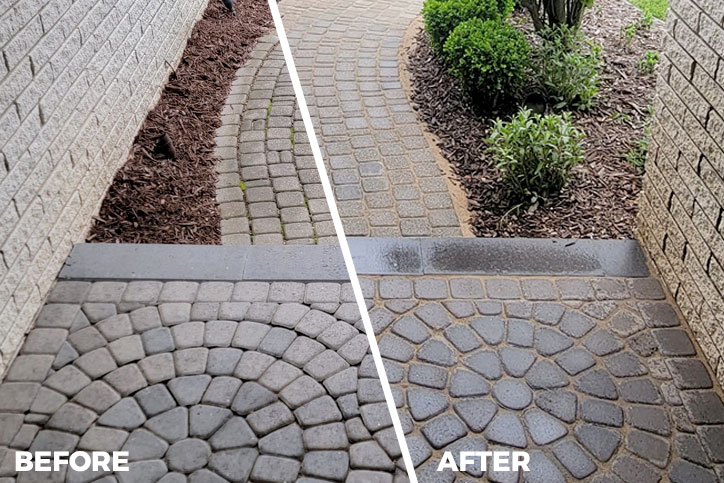
If your pavers look old and dirty, you may not need to replace them. Sometimes a thorough cleaning can completely transform old materials. Learn how to make your pavers look like new, and when you may want to call in the professionals.
Sweep away Leaves and Surface Debris
Whether you plan to use a power washer, surface cleaner or basic garden hose to clean your pavers, you’re going to want to sweep the area first. You could also use a leaf blower to blow off leaves, twigs and other debris on the pavers. The goal here is to remove anything loose that might be trickier to move when wet. This will save you time in the next steps.
Carefully Pressure Wash the Pavers
Most people choose to pressure wash their pavers because the water blasts away weeds, stains and grime. You could also use an orbital surface washer, which covers a larger area than the targeted pressure washer stream. Professional paver cleaning companies tend to use a combination of tools and techniques to get the job done. If you’re going the DIY route, you may opt for one tool that saves money and takes more time to execute.
If you have a brick wall or retaining wall nearby that you want to wash, start with that first. Work your way from top to bottom, and then move across the paved area. The key is to move slow and steady to get as much coverage as possible. This isn’t a fast job, so set your expectations accordingly.
Use Paver Cleaner to Remove Stains and Grease
With the bulk of the cleaning done purely with water, you can go back in with a cleaner or degreaser. This will do some of the extra work the water pressure may not have tackled.
There are paver cleaners on the market designed to accomplish different tasks, but you could also try a bucket of warm water and dish soap. Use a broom or mop to scrub the cleaner into the pavers, and then rinse thoroughly.
Be careful not to do this on a hot day because the sun may evaporate the water before you rinse. If you’re cleaning pavers in the summer, work in the early morning or late afternoon.
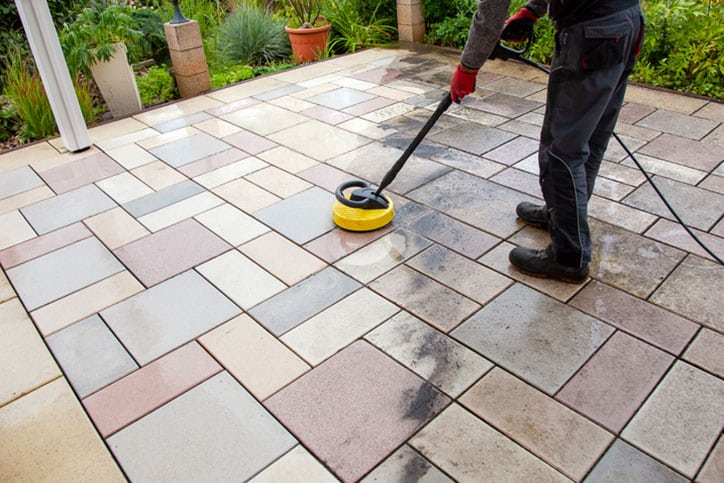
Let the Pavers Fully Dry
After you’ve rinsed everything off, call it quits for the night. Come back the next day when the pavers are fully dry. This will help you see any spots you may have missed. If everything looks good, you can sand the pavers. If you want to do another round of cleaning, just make sure the pavers are dry before you sand.
Resand the Pavers to Prevent Future Shifting
Get new paver sand to put in the joints. You can sweep this into the crevices to lock the pavers back into place. Some paver sand only requires sweeping, and other products may suggest a light misting after installation.
It’s crucial that you finish this process with new sand. Most of the old sand was likely washed away during the cleaning, and you need this to keep the pavers where they belong. The sand also keeps weeds under control and creates a clean look for the paved area.
Get Professional Paver Restoration from Mortar City Masonry
If the tasks above sound like a lot of work, it’s because they are. This is not a job for the faint at heart, and it costs a lot to get the right equipment for the job. We highly recommend getting professional paver restoration if you want the job done right. You get to sit inside and let someone else handle the headaches for you. And in the end, it looks like you have brand new pavers!
Mortar City Masonry offers brick paving and paver restoration services. We work in many communities around Southeast Michigan, and we receive consistent referrals from former clients. If you’d like a quote for paver restoration, please contact us at (586) 533-1305.


